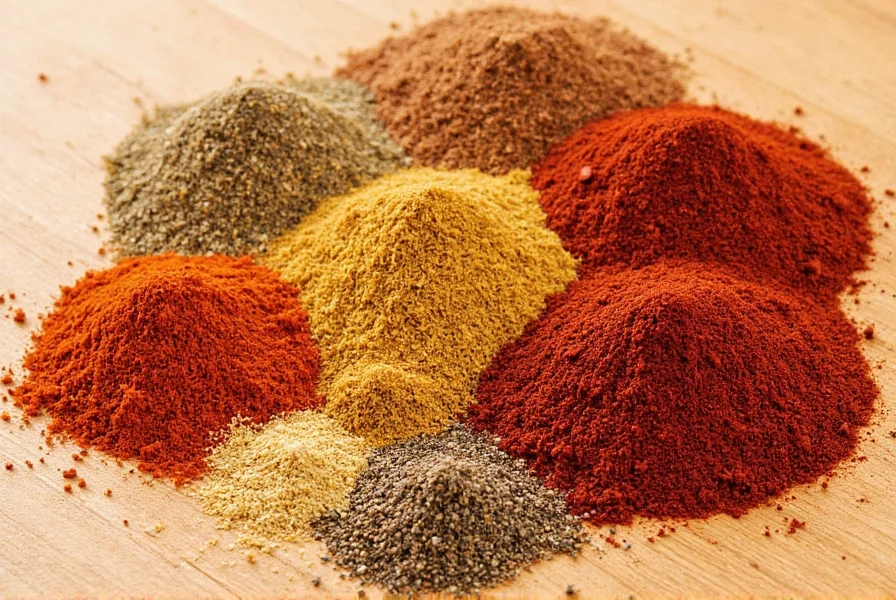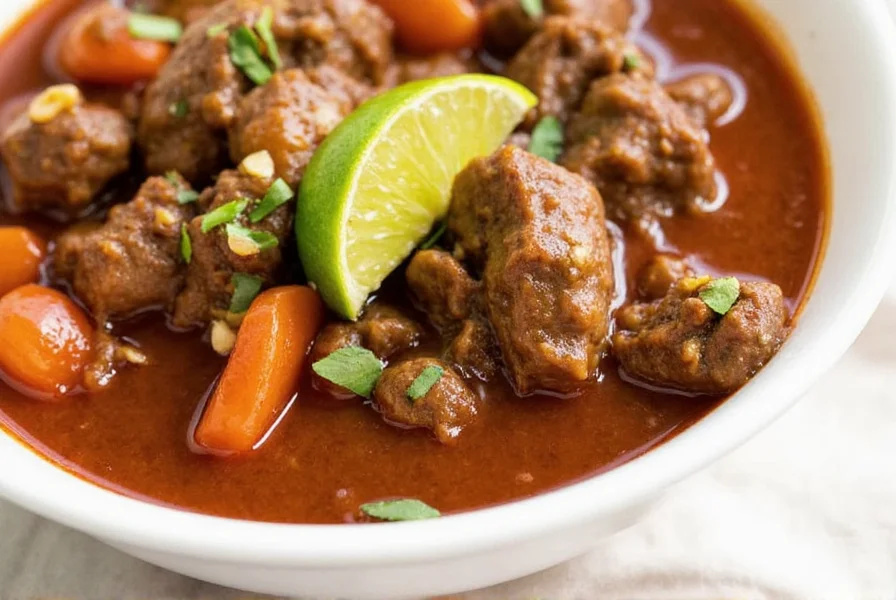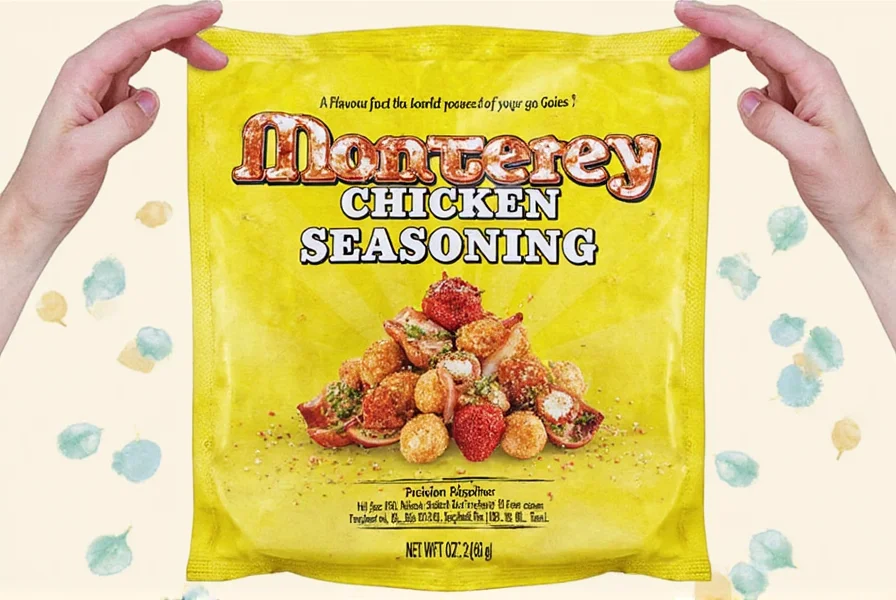Mexican seasoning is a versatile spice blend that brings authentic, bold flavors to dishes like tacos, fajitas, and grilled meats. This guide explains exactly what Mexican seasoning is, its key ingredients, and how to use it effectively in your cooking. Whether you're a beginner or experienced cook, you'll learn how to select the best blend and maximize its flavor potential.
Table of Contents
- What Is Mexican Seasoning?
- Key Ingredients in Mexican Seasoning
- How to Use Mexican Seasoning
- Buying Guide: How to Choose the Best Mexican Seasoning
- Pro Tips for Using Mexican Seasoning
- Frequently Asked Questions
- Conclusion
What Is Mexican Seasoning?
Mexican seasoning is a spice blend specifically formulated to capture the authentic flavors of Mexican cuisine. It typically includes cumin, chili powder, garlic powder, onion powder, oregano, and paprika. Unlike taco seasoning, which focuses on heat, Mexican seasoning offers a balanced flavor profile suitable for various dishes beyond tacos.
This blend enhances dishes with warmth, depth, and complexity while maintaining versatility for different cooking styles. Whether you're preparing grilled meats, soups, vegetables, or snacks, Mexican seasoning provides consistent flavor without needing multiple individual spices.

Key Ingredients in Mexican Seasoning
Understanding the ingredients in Mexican seasoning helps you appreciate its versatility and choose the right blend for your needs. Here's a breakdown of the most common components:
| Ingredient | Flavor Profile | Role in the Blend |
|---|---|---|
| Cumin | Earthiness with a warm, nutty note | Foundation of the blend; adds depth and warmth |
| Chili Powder | Spicy, smoky, and slightly sweet | Provides heat and color |
| Garlic Powder | Pungent and savory | Enhances umami and adds savoriness |
| Onion Powder | Sweet and mellow | Complements other spices and adds depth |
| Oregano | Pungent, slightly bitter | Brings freshness and a herbal touch |
| Paprika | Smoky and sweet | Adds color and a mild, smoky flavor |

Some versions might include salt, black pepper, or a pinch of sugar to balance heat. Not all blends are identical—some are spicier, while others emphasize aroma. Always check labels for specific heat levels or flavor profiles.
How to Use Mexican Seasoning
Mexican seasoning is incredibly versatile. Here are proven ways to incorporate it into your cooking:
- Grilled Meats: Sprinkle on chicken, steak, or pork before grilling for a smoky, spicy finish.
- Tacos and Burritos: Mix into ground beef or shrimp for a flavorful filling.
- Vegetables: Toss with roasted potatoes, bell peppers, or zucchini for a quick and tasty side.
- Soups and Stews: Add a teaspoon or two to enhance the depth of flavor in bean soups or chili.
- Snacks: Sprinkle over popcorn or chips for a spicy twist.

Adjust the amount based on your taste preferences. A light dusting works well for baked potatoes, while a generous sprinkle brings out the full flavor in grilled meats.
Buying Guide: How to Choose the Best Mexican Seasoning
When selecting Mexican seasoning, consider these factors:
Types of Mexican Seasoning
- Classic Mexican Seasoning: Balanced blend of cumin, chili powder, garlic, and oregano. Ideal for general use.
- Spicy Mexican Seasoning: Contains more cayenne pepper or hot chili powder for heat lovers.
- Smoked Mexican Seasoning: Infused with smoked paprika for deeper, richer flavor.
- Low-Sodium Mexican Seasoning: Great for health-conscious cooks reducing salt intake.

Features to Look For
- Ingredients: Look for high-quality, natural ingredients without excessive fillers or artificial additives.
- Heat Level: Choose based on your tolerance for spiciness—mild, medium, or hot varieties are available.
- Origin: Traditional Mexican seasonings from specific regions like Oaxaca or Puebla often have distinct flavor profiles.
- Brand Reputation: Trusted brands like McCormick, La Costeña, or Mrs. Dash offer reliable quality.
Best Uses and Target Audience
Mexican seasoning is perfect for:
- Home cooks who want to elevate meals without complicated recipes.
- Food enthusiasts exploring global cuisines and seeking authentic flavors.
- Busy professionals looking for quick, flavorful meal solutions.
- Health-conscious individuals opting for low-sodium or organic blends.
Pro Tips for Using Mexican Seasoning
Maximize your Mexican seasoning experience with these practical tips:
- Start Small: Begin with a small amount and adjust to taste—easier to add more than to fix an overly spicy dish.
- Pair with Other Spices: Combine with lime juice, cilantro, or avocado for a complete Mexican-inspired flavor.
- Use Fresh Ingredients: While pre-made seasoning is convenient, fresh herbs and citrus enhance overall taste.
- Store Properly: Keep in an airtight container away from direct sunlight to preserve potency.
- Experiment: Mix and match with other spices or ingredients to create your own signature blend.

Frequently Asked Questions About Mexican Seasoning
What's the difference between taco seasoning and Mexican seasoning?
While often used interchangeably, taco seasoning typically has more cumin and chili powder with a focus on heat, while Mexican seasoning offers a more balanced flavor profile with oregano and garlic, making it suitable for various Mexican dishes beyond just tacos.
How spicy is Mexican seasoning?
The spiciness varies by brand and recipe. Most standard blends are moderately spicy, but many companies offer mild, medium, and hot varieties. For heat sensitivity, choose "mild" versions or make your own blend controlling cayenne pepper amounts.
Can I make my own Mexican seasoning at home?
Yes! A basic homemade blend combines 2 tbsp chili powder, 1 tbsp cumin, 1 tsp garlic powder, 1 tsp onion powder, 1 tsp oregano, ½ tsp paprika, and ½ tsp salt. Mix well and store in an airtight container. Adjust ingredients to suit your taste preferences.
How long does Mexican seasoning last?
Properly stored in an airtight container away from heat and sunlight, Mexican seasoning maintains its best flavor for 6-12 months. While it won't spoil, flavors gradually diminish over time. For optimal freshness, write the preparation date on the container.
Is Mexican seasoning gluten-free?
Most pure spice blends are naturally gluten-free, but check labels as some commercial blends may contain anti-caking agents with gluten. If making your own, ensure all individual spices are certified gluten-free if you have celiac disease or severe sensitivity.
What dishes work best with Mexican seasoning?
Mexican seasoning shines in tacos, fajitas, enchiladas, and grilled meats. It's also versatile for roasted vegetables, soups, stews, eggs, popcorn, and grilled corn. Its flexibility makes it a kitchen staple beyond traditional Mexican recipes.
Conclusion
Mexican seasoning is a versatile spice blend that captures the bold, vibrant essence of Mexican cuisine. From its key ingredients like cumin and chili powder to its diverse applications in cooking, this seasoning has become essential for home cooks and professionals alike.
Whether you're preparing a casual taco night or a special dinner, Mexican seasoning offers a quick and easy way to infuse your dishes with authentic flavor. With the right blend, proper storage, and creative touches, you can enjoy the rich heritage of Mexican cooking in every bite.











 浙公网安备
33010002000092号
浙公网安备
33010002000092号 浙B2-20120091-4
浙B2-20120091-4